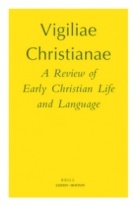A guest post by David Blocker:
LITERARY PARALLELS BETWEEN CLEMENT’S
EXCERPT FROM THE SECRET GOSPEL OF MARK,
AND THE TRANSFIGURATION OF JESUS FROM THE
GOSPELS OF MARK, LUKE AND MATTHEW.
Previous posts on this web site demonstrated the existence of extensive literary parallels between Clement’s excerpt from the Secret Gospel of Mark, the Raising of Lazarus story from the Gospel of John, and the synoptic Gospels’ stories about miraculous healings, reanimations of the dead and the expulsion of demons into swine.
This essay and the accompanying table demonstrate newly discovered parallels between Clement’s Secret Mark excerpt and the Transfiguration of Jesus episode from the synoptic gospels (Mark 9:2-13 and parallels).
I became aware of the parallels when I noticed that the words “six days” at the beginning of the Transfiguration story in the Gospel of Mark (Mark 9:2), also occurred in the Secret Mark excerpt and in the Gospel of John (John 12:1). Further examination of these texts demonstrated that they and Clement’s excerpt from Secret Mark have a closely linked set of sequential parallel themes.
The text of Matthew’s Transfiguration scene also closely mirrors the above mentioned texts.
These parallels are presented in the accompanying table.
The table named “Secret Mark Parallels with the Transfiguration in the Gospels of Mark Luke and Matthew” shows that the texts contain parallel mentions of traveling, rebuking, the Kingdom of Heaven (or God), six days, white clothing and giving instructions. The gospel texts are in vertical columns, the parallel text segments are arranged in horizontal rows. The left most column of the table lists the topics of the parallels that are contained in each row, and specific text parallels in each row are color coded.
I had previously demonstrated that the synoptic gospel stories about miraculous healings, the exorcism of demons, and the restoration of the dead to life, have a literary relationship to the Secret Gospel of Mark excerpt, which in turn is related to the Raising of Lazarus story in the Gospel of John (See here and here).
This suggests that the miracle stories from the synoptic gospels are literary creations. They seem to be based on, or were inspired by a common source, most likely a story similar to the Raising of Lazarus. They are not unrelated accounts of independently occurring events.
The Gospel of Mark is a literary fugue, whose component miracle stories are variations on a common theme.
The Gospel of Mark was already known to have an intricate internal structure due to the way its parts were assembled out of intercalated layers.
I have now shown that the author of Mark included yet another complication in his work, by making it a literary fugue.
The narrative structure of the Gospel of Mark is remarkably complex, with its internal verses as intertwined and closely layered as the melody of a Bach fugue.
The synoptic gospels’ healing pericopes are often more closely matched to the Raising of Lazarus pericope than they are to the Secret Mark excerpt. This indicates the text they used as their model or source, was more like the Gospel of John’s text about Lazarus, than Secret Marks’ account of Jesus and the rich young man.
The Transfiguration pericope in the Gospel of Luke contains some significant differences from the Mark’s and Matthew’s Transfiguration. The Gospel Luke does not have the “six day” parallel (Luke 9:28, “…about eight days…”), nor does Luke explicitly mention Jesus giving instructions to his disciples at the end of the parallel texts (Luke 9:36 vs. Mark 9:9 and Matthew 17:9).
Luke does contain a phrase about awakening from sleep (Luke 9:32, “…and when they wakened…”) which has no counterpart in Matthew or Mark, but which is analogous to phrases about waking up in the Secret Mark excerpt (“…and when Jesus woke up…”) and the Gospel of John’s Raising of Lazarus (John 11:11, “…I go to awake him out of sleep…”).
The author of the Gospel of Luke used his sources differently than did the author of Mark and Matthew. The author of Luke changed the number of days from the “six days” of the other texts to eight, emphasized the disciples’ sleeping, presented Peter as bewildered by the miracle he had just witnessed (Luke 9:33), and had the disciples decide to remain silent about the miracle on their own (Luke 9:28), rather than at Jesus’ behest (Mark 9:9 and Matthew 17:9).
Luke’s version of the Transfiguration has overlaps with the text from the Gospel of John that the other two synoptic texts do not have. Interestingly some of these passages prefigure later passages in the synoptic gospels. For example the disciple’s napping while Jesus was Transfigured (Luke 9:32) prefigured their later somnolence while Jesus was awaiting his arrest (Mark 14:37, Luke 22:45, Matthew 26:40), reinforcing the disciples’ unworthiness to be his followers or the inheritors of his teachings.
The synoptic gospel’s account of the Transfiguration described a mountain top revelation about the Kingdom of Heaven, from people who had previously gained admission to the Kingdom of Heaven (Moses and Elijah). The essay A Fourteenth Century Text in which Jesus Taught the Kingdom of God During the Night at Bethany: Does It Demonstrate That Secret Mark Is an Ancient Text, and Not a Modern Forgery? which I co-authored with Roger Viklund, showed that there were literary and thematic parallels between the Secret Mark Excerpt and another text about the revelation of the mysteries of Heaven to Jesus’ disciples, the Shem-Tob Hebrew Matthew. 21:17 (From George Howard, Hebrew Gospel of Matthew, Macon, GA: Mercer University Press, 1995).
The Secret Mark excerpt discovered by Morton Smith provides a key text that shows how seemingly disparate passages in the synoptic gospels are linked to one another, to the Raising of Lazarus story in the Gospel of John, and to a passage in Shem-Tob’s Hebrew Matthew.
I want to thank Roger Viklund for his editorial assistance and for generously allowing me to publish my findings on his web blog.
David Blocker, 2013 06 04
